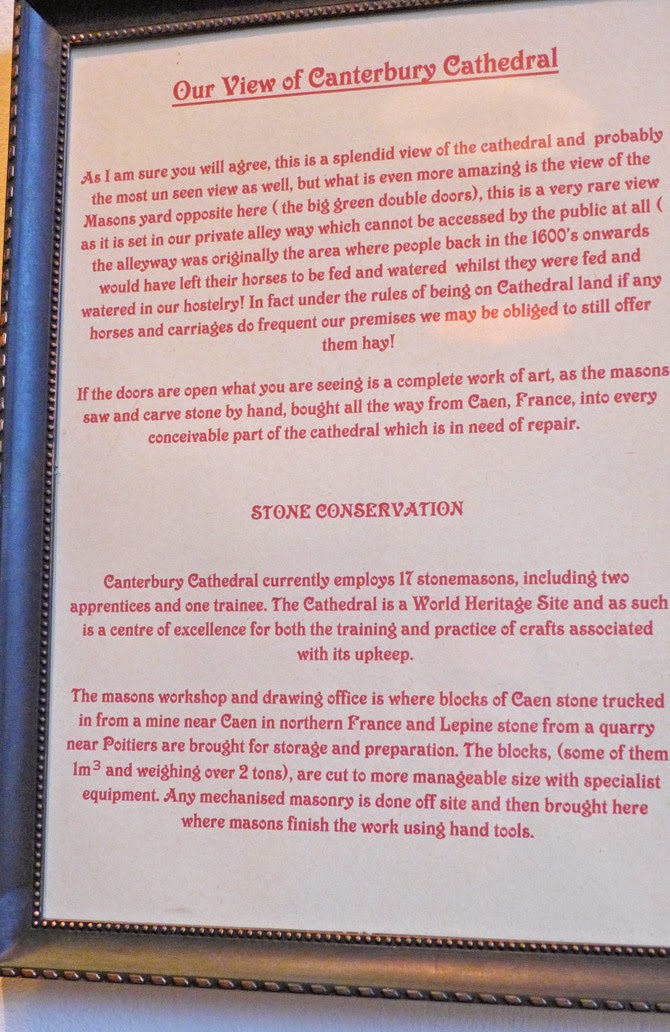So when a friend invited our London contingent to come along to Canterbury for a day trip, this Chaucer fan didn't hesitate to say yes.
It was a very wet, dark day when we left King's Cross station, but that didn't stop us from enjoying the view of the English countryside.
We took a nostalgic tour of the University of Kent campus. From the train station we walked through woodsy lanes and along football fields of the school grounds.
One new addition to the university was a walking labyrinth for meditation, with an accompanying bench for people who preferred to meditate in stillness.
The university gave a classically modernist vibe, with mid-century architecture, striking sculptures and austere lawns that gave a great view of old Canterbury and its cathedral even through the misty drizzle.
Walking into town, we left the 50s collegiate life for a much more medieval English setting.
The sheet rock that covered many walls and buildings were made of limestone and flint - a jagged, super-hard, translucent rock, first used in Stone Age tools.
Pubs, shops and houses on cobblestone streets gave off the air of Chaucer's time - a feudal era, but with a touch of literary romance.
There were canals, moats and churches galore.
Medieval and modern lived side by side.
A castle gatehouse squatted in the middle of a busy intersection.
A monastery loomed over a shopping district.
By the time we got into the town proper, we were famished. We ate a massive brunch at tourist-friendly Cafe Chambers. It used to be called the Mayflower, after the ship that carried Puritan settlers to America.
Aside from the slightly overwhelming range of milkshakes on offer, what we enjoyed most about the restaurant was the view.
The place looks down into a masonry yard, where artisans study stonework in order to maintain and preserve the ancient stones of the Cathedral.
We were lucky enough to spot some of the masons at work and catch a watery sun trying its valiant best to shine on the imposing Gothic towers.
There was a sign by the window explaining why the artisan's space was so important. Click here or on the picture below to read the sign.
There was another little surprise in the restaurant washroom: the door to a secret passageway used by monks to escape Henry VIII's purge of the Catholic Church during the birth of Anglicanism.
Sadly the passage was inaccessible as it doesn't meet modern health and safety codes.
 |
| Click on the picture to enlarge and read the history of the Monks' Door. |
Pressed for time, we kept our money for enjoying tea in the medieval city centre instead.
We came across several Tudor homes and old churches with decaying bell towers.
This weird little relic is as Chaucerian as I could imagine. Not only is it still standing but it seems very well maintained and something of an icon of the town.
We finished up at a pub outside these intricate waterworks.
The rain had stopped and the sun came out - just in time to set. The landscape turned a vivid green - the colour we associate most with this country.
Canterbury, in life as in literature, seems to embody the true, elusive nature of 'Englishness'.




































No comments:
Post a Comment
Note: Only a member of this blog may post a comment.